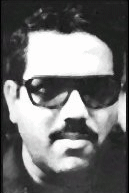 News today in the world of bombed airliners. A US federal judge has ordered Gaddafi to pay 6 billion (with a b) dollars to the families of victims and interested parties of the UTA flight 772 incident in 1989. The judge had ruled earlier that Libya was to blame, the case displaying similarities with the Pan Am 103 Lockerbie bombing of a year earlier.
News today in the world of bombed airliners. A US federal judge has ordered Gaddafi to pay 6 billion (with a b) dollars to the families of victims and interested parties of the UTA flight 772 incident in 1989. The judge had ruled earlier that Libya was to blame, the case displaying similarities with the Pan Am 103 Lockerbie bombing of a year earlier. But 103 and 772 aren't the only aircraft bombings Libya had been tied to. In 1986 Pan Am 73 was hijacked in Karachi, Pakistan on it's route from Bombay to JFK. The plane's crew was able to escape through a hatch before the hijackers got control of the aircraft, effectively stalling the hijacking on the ground.
The terrorists, led by Zayd Hassan Safarini, killed 20 people and injured many more. They were connected to the notorious Abu Nidal Organization and were trying to barter for the release of Palestinian prisoners.
Safarini was quietly captured shortly after 9/11 and was sentenced to life in prison in 2004. He's currently chilling at the Supermax in Florence, CO along with other noted terrorists.
But what about this Abu Nidal Organization? During the 80s they were perhaps the most feared terrorist group in the world. Nidal himself boogied to Baghdad towards the end of his fabled career and was given state-sanctioned lodging. Most who follow this stuff know about Mr. Nidal's tragic demise in 2002. He either committed martyrdom by shooting himself in the head--several times--or was pushed to that end by a visiting contingent of Mukhabbarat intelligence officers, who had dropped by for a friendly chat.
It was believed that Saddam, after having given Nidal sanctuary for a number of years, got rid of him as a gesture to the west to forestall an invasion. Others believe it was to keep him from turning or giving information to the coalition about Saddam's old tricks. Probably a little of everything.
But wait, there was another airplane bomber associated with Iraq. Back in 1982 Mohammed Rashed planted a small seat bomb on Pan Am Flight 830, bound from Baghdad to Toyko (and on to Honolulu) which resulted in the death of a Japanese teenager. He was part of, well, here:
The group, known as the 15th of May for the date in 1948 when the first Arab-Israeli War began, was based in Iraq, with operatives around the world.Here's an earlier story from my site about this from last year:
Interestingly, this was the same MO used by super-terrorist Ramzi Yousef, himself a Palestinian sympathizer. Rashed's 15th of May terrorist group was relatively inactive past the mid 80s, but according to Thomas Jocelyn, Saddam still harbored its leader Abu Ibrahim until 2001-2002. Add him to the likes of Abu Nidal, Abu Abbas, and the still unaccounted for Abdul Yasin, a WTC-One bomb mixer.We all know about Gaddafi giving up his nuke program after the shock and awe settled over Baghdad in 2003. That seemed to complete the circle between Libya and Iraq, yet for some reason the new conventional wisdom about Saddam being an absolute monster incapable of harming Americans remains vibrant and strong.
So strong that a serious contender for the presidency regularly pats himself on the back for not removing the man from power, even after 9/11, and even after the effect it had on Libya, all without the faintest of protestations from the press. Here was his part of his pledge from 2002:
After September 11th, after witnessing the carnage and destruction, the dust and the tears, I supported this administration's pledge to hunt down and root out those who would slaughter innocents in the name of intolerance, and I would willingly take up arms myself to prevent such tragedy from happening again.Surely one day this will all make sense.
MORE 1/17/08
This is a pretty graphic series of pictures of the disintegration of an airplane in flight, this time an F15C over Missouri that eventually led to the grounding of all F-15Es (the pilot bailed out and survived). The point? To illustrate the after-effects of the catastrophic loss of an aircraft's nose section while in flight. Due to the shift in the center of gravity, the remaining section cannot continue in flight by itself, rising thousands of feet higher due to thrust of the engines. The pieces simply fall to earth.

No comments:
Post a Comment